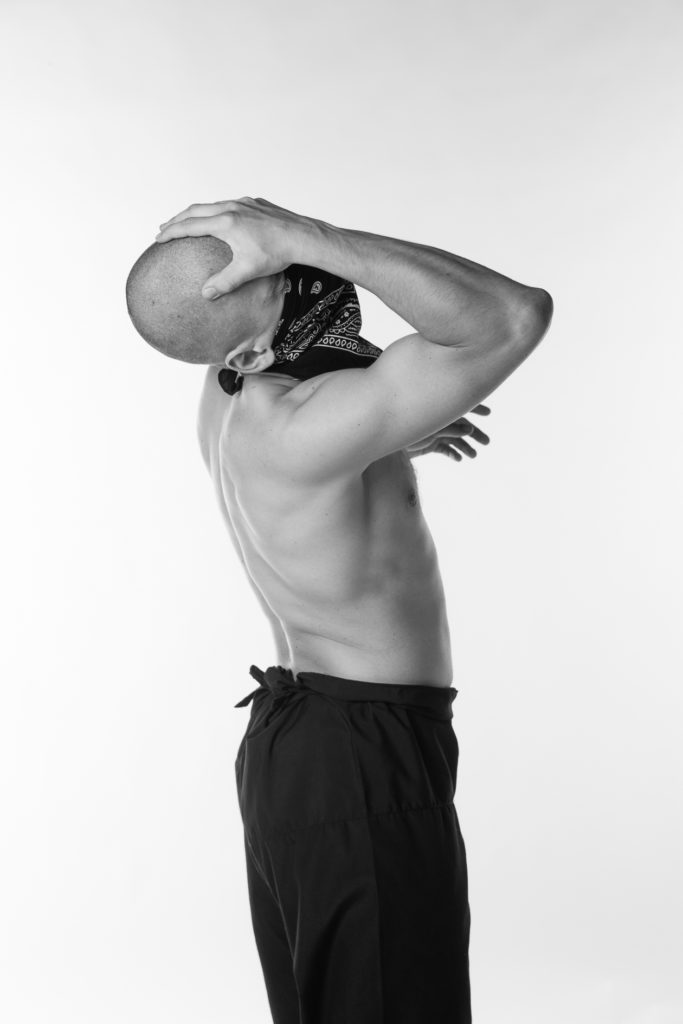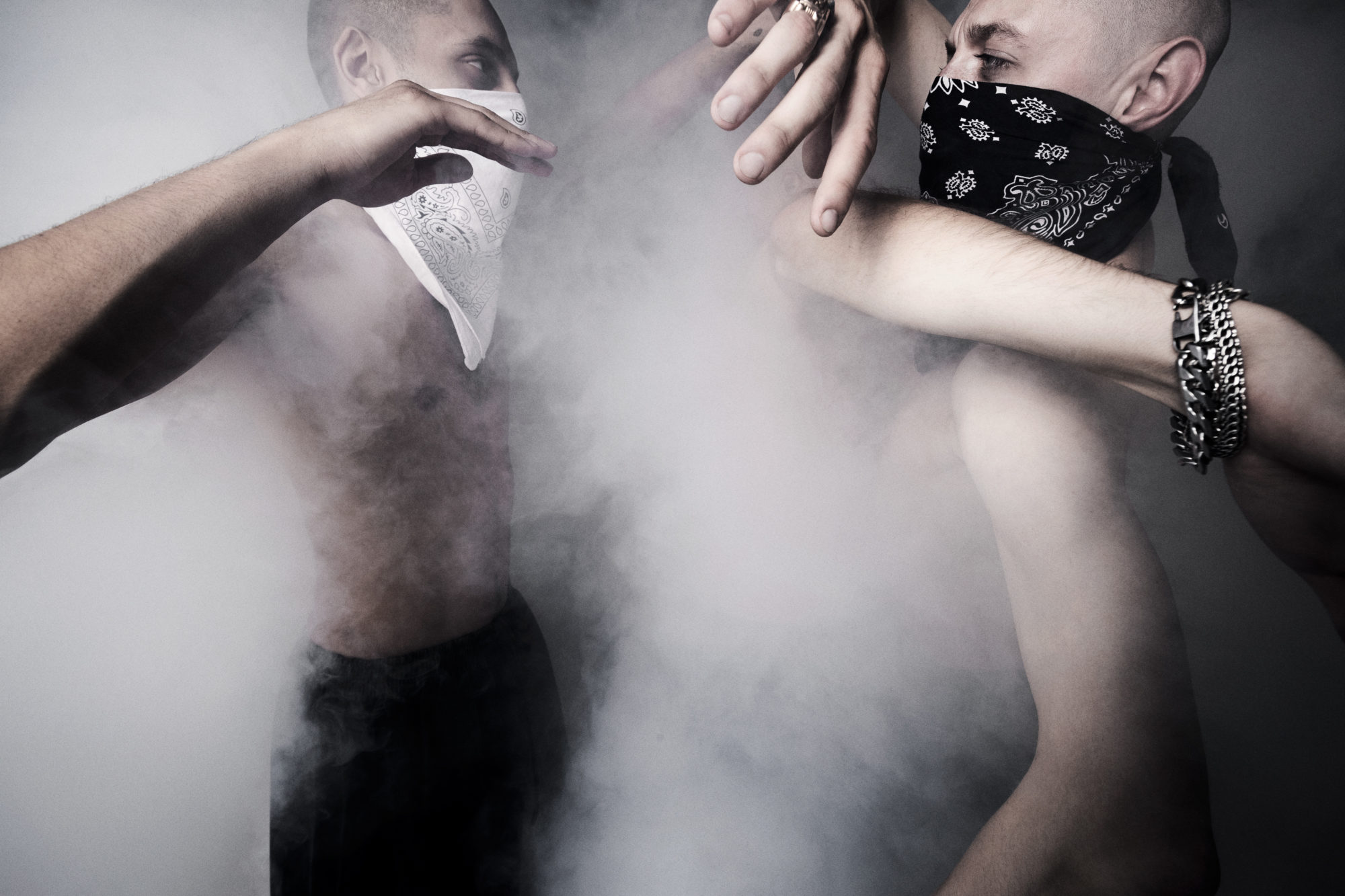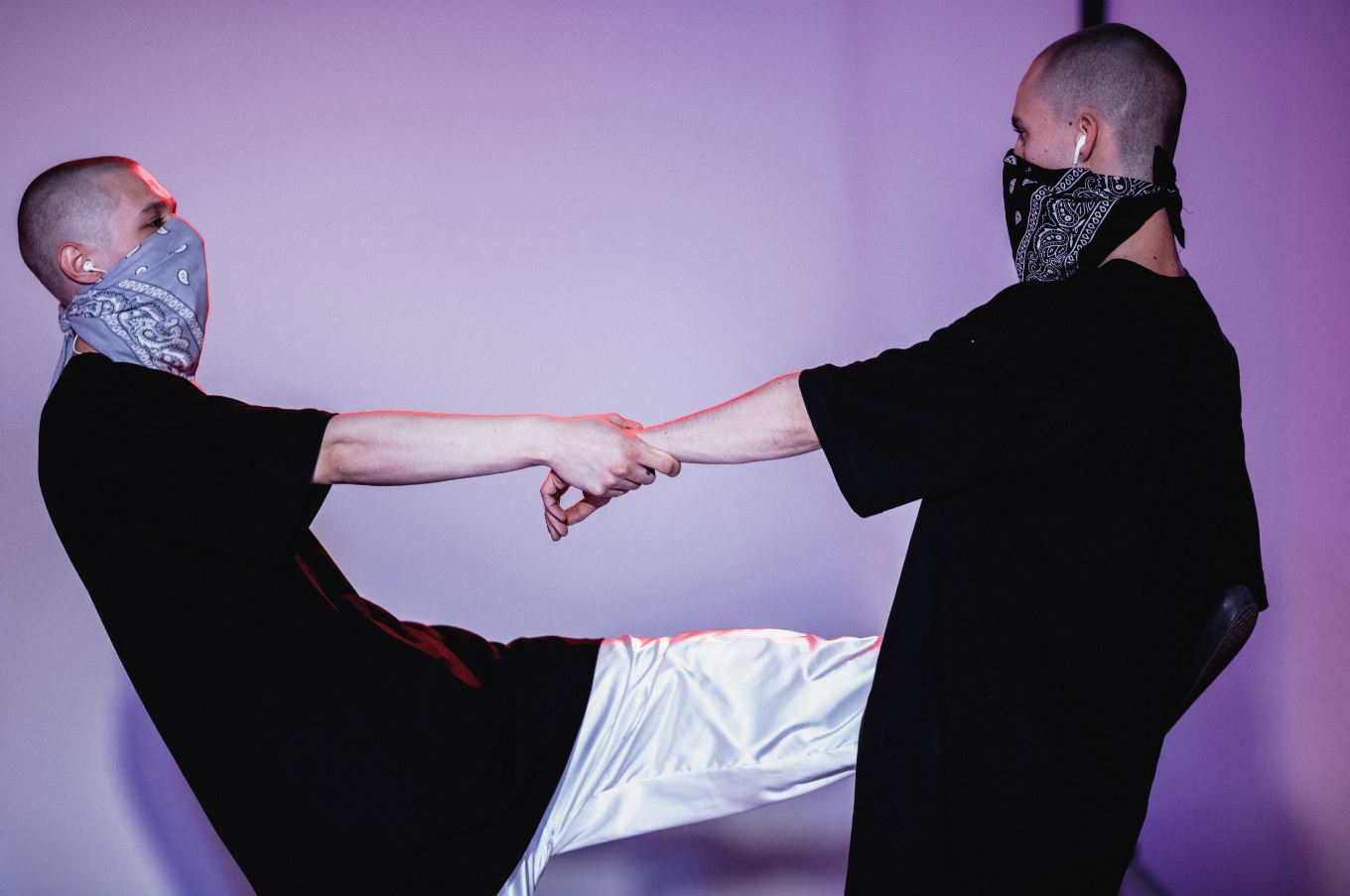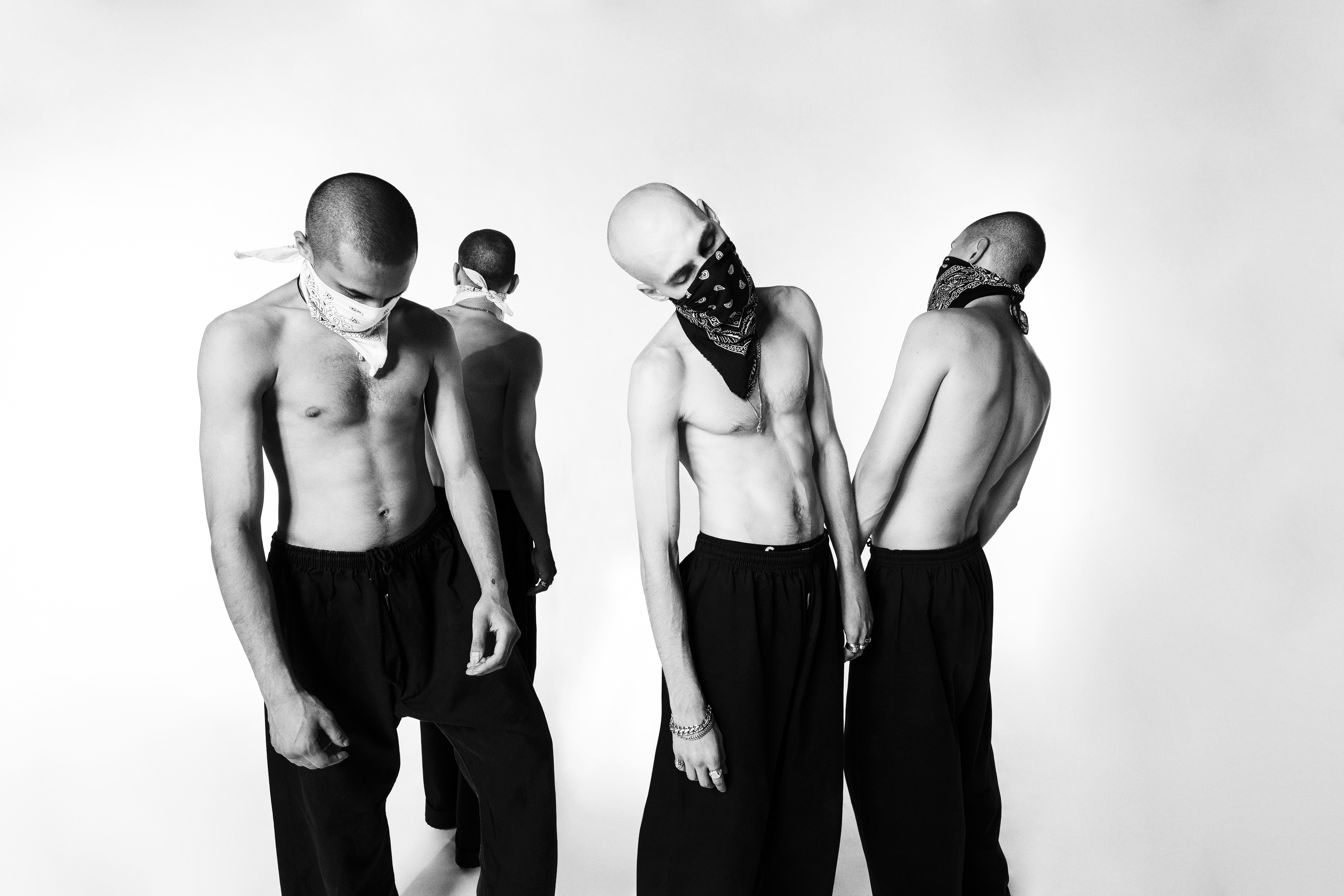Vasya Run | A Journey in Youth’s Culture
 Vasya Run is a complex project that works as a junction between music, theater, performance and contemporary art. Delineated through anonymity, Vasya wants to be a platform for experimentation enabling interaction and collaboration. It is an intensely powerful work which stands out because of its theoretical framework and thanks to the alternative practices that have been used during the working sessions within the group. The formation is composed by young men aged between 18 and 28 which have no experience whatsoever in performing arts. Vasya Run analyses forms of otherness which emerge from the differences in subjectivity of the performers that create a dense representation of youth’s sub-culture.
Vasya Run is a complex project that works as a junction between music, theater, performance and contemporary art. Delineated through anonymity, Vasya wants to be a platform for experimentation enabling interaction and collaboration. It is an intensely powerful work which stands out because of its theoretical framework and thanks to the alternative practices that have been used during the working sessions within the group. The formation is composed by young men aged between 18 and 28 which have no experience whatsoever in performing arts. Vasya Run analyses forms of otherness which emerge from the differences in subjectivity of the performers that create a dense representation of youth’s sub-culture.
Joel Valabrega: Vasya Run is an anonymous platform founded in 2014 that works on the juxtapositions of our contemporaneity and through its evocative power it analyses the inner self of man. I would like to start by asking you to describe how it all began and with what intent?
Vasya Run: It all started exploring masculinity and street subculture, which was mainly interesting for the visual component, way and lifestyle, which seemed nothing more. Therefore, having received the first story related to graffiti and other illegal practices of street subculture, it was easy to find heroes, young boys, ready to play this image, simply borrowing and exploiting. The task was set as follows – if you want to go in with such a story, you still need to answer the question – who is this “I” who wants to go in.
 Joel Valabrega: Much is said about Vasya Run as a survival guide for today’s youth. What subcultures, contemporary uniforms and urban contexts were the starting points for the creation of this work?
Joel Valabrega: Much is said about Vasya Run as a survival guide for today’s youth. What subcultures, contemporary uniforms and urban contexts were the starting points for the creation of this work?
Vasya Run: First of all, graffiti culture, hip hop, skateboarding and break dance. Almost all boys in one way or another connect their life with one or another type of subculture. The group is composed of young men aged from 18 to 28, which is a very specific transitional moment because it’s before being overwhelmed by social conventions. This gives the group an openness towards different contexts, and by deconstructing them singularly, we build up the aesthetics of the performance.
Joel Valabrega: The return of anonymity is increasingly visible. What are the reasons that led you to define Vasya Run as anonymous?
Vasya Run: Anonymity in our case has several tasks at once. For a participant, this is an opportunity to be heard, not seen. For the viewer – to stop “enjoying” their appearance and stop choosing a “favorite”, because everyone looks like one person – one height, one physique, bald heads. Blank appearance. The idea of anonymity in itself, of course, is hardly feasible today. Cameras, phones, social networks. But there is an inner work that needs protection. Anonymity is a prerequisite for this work.
 Joel Valabrega: This project works a lot on the concept of spiritual emancipation and the central focus is on developing self-remembering, self-study and immersive practice. What do these elements mean for you? What was the teaching approach you were most inspired by? I’m wondering if you could tell us a little bit about George Gurdjieff and your relations to his practice?
Joel Valabrega: This project works a lot on the concept of spiritual emancipation and the central focus is on developing self-remembering, self-study and immersive practice. What do these elements mean for you? What was the teaching approach you were most inspired by? I’m wondering if you could tell us a little bit about George Gurdjieff and your relations to his practice?
Vasya Run: We work with different practices and teachings, studying and combining what has the greatest internal response for most project participants. As we developed, we worked quite intuitively, highlighting certain dark zones of participants. Gurdjieff’s practice is one of the components of the group’s work over a large half of its six-year existence. The idea of three centers and the Sufi tradition form the basis of almost all the latest performances of the group. Unlike the real followers of Gurdjieff, the group does not fully recreate the movement, but rather we compile and integrate tasks that somehow bring us closer to the main goal – presence. Movements are powerful, and the ability to reproduce them is directly related to the state of presence. For a movement group, this is an indicator of where the “I” is and the answer to the question of who the “I” really is. I’d like to say about the number of practices that we are interested in. Starting from experiments with breathing, ending with boxing. Lately we have been fond of ideokinesis, the Feldenkrais method.
Joel Valabrega: What is the cardinal point of Vasya Run?
Vasya Run: Actually, the group is the beginning of everything, it is very important to work in collaboration. Preparing for a performance does not look like memorizing movements and text, but as an attempt to find common ground. We sing mantras, do Chinese tea ceremonies, dance, burn incense. This unites us and allows us to go on stage as a whole, to become one person – Vasya. After the performance, we sit down for a long discussion. It is important to hear everyone. This conversation is not about what happened and where there were errors, but about the internal state of presence. Did each of us manage to go beyond the limits of the familiar and automatic? There is a special state between us, this is not a simple relationship of friends or a working relationship. We try to talk with the true nature of everyone, without masks and borders. It’s like everyone’s meeting with himself. But with himself conscious, honest and alive. Our platform is a laboratory of communication, awareness and search. Search is a very important point. This is not just an artist’s review, it’s a constant question for myself –where am I and why all this. This is a therapy without a goal and result. It is the search process.
 Joel Valabrega: Vasya Run is composed by performers which were found on the streets. After the definition of the group and becoming something like a commune or a family, they dedicated over six hours per week to a carefully curated set of exercises assembled from various theatre schools, spiritual rituals, and methods of physical self-development. What is the degree of improvisation and what was your role in defining all of the steps which made the performance what it is?
Joel Valabrega: Vasya Run is composed by performers which were found on the streets. After the definition of the group and becoming something like a commune or a family, they dedicated over six hours per week to a carefully curated set of exercises assembled from various theatre schools, spiritual rituals, and methods of physical self-development. What is the degree of improvisation and what was your role in defining all of the steps which made the performance what it is?
Vasya Run: This question highlights my figure of the artist, which is undesirable, since the project is anonymous. What I can say for sure is that the work goes only with those practices that find an internal response from the participant. My business is to research, their business is to try.
Joel Valabrega: Your project made me think of Dostoevskij’s writings, especially Memoirs from the Underground. The author admits his inadequacy in life and he questions himself of the purpose of writing. Why should one write? To get rid of memories that oppress men and that put on paper can be judged in a different, perhaps more detached way. Do you think the work done by the 9 boys works similarly? Is the possibility of working on their own historicity and positioning within society a tool to help them live in our contemporary world?
Vasya Run: We have the following principle of work with memories: we sort of separate all aspects – emotional, physical and mental. Reproduction of movements in new conditions, namely their physical aspect, achieves a therapeutic effect.
 Joel Valabrega: Can you tell us about the staging. How is the performance structured? Is it to be considered an ongoing project? Is there an evolution from the first mise-en-scène to the last one up to now? How do you relate to the translation of the performance from the streets, with its unexpected elements, to a place appointed to art with a specific public?
Joel Valabrega: Can you tell us about the staging. How is the performance structured? Is it to be considered an ongoing project? Is there an evolution from the first mise-en-scène to the last one up to now? How do you relate to the translation of the performance from the streets, with its unexpected elements, to a place appointed to art with a specific public?
Vasya Run: The new performance leads participants to the “unknown zone” with the presence of predefined components that are known, but whose playback is directly related to the moment, to the “here and now”. Multitasking is still associated with the mobilization of centers (mind, body, feelings), with their swinging and study for subsequent synchronization. The list of internal tasks of the performer includes work with gravity (methods of body-oriented therapy and biosynthesis), chakras (methods of theta healing). Movements in space are connected by routes along an invisible to spectator to the playing field, which contains therapeutic indicator issues. The text creates a structure that unites performers, but does not allow to the spectator be read by. The meaning of the words is revealed inside each participant and finds a response separately. By complexity, the performance forms an experimental field for everyone at the level of perception at which the participant is located. Work with attention and self-observation happens, and the performance programs only steps into this “unknown” zone.
